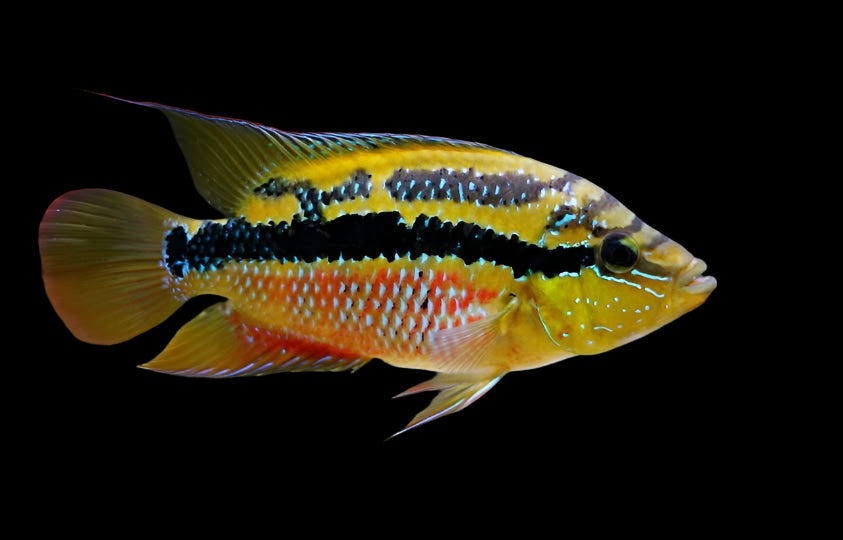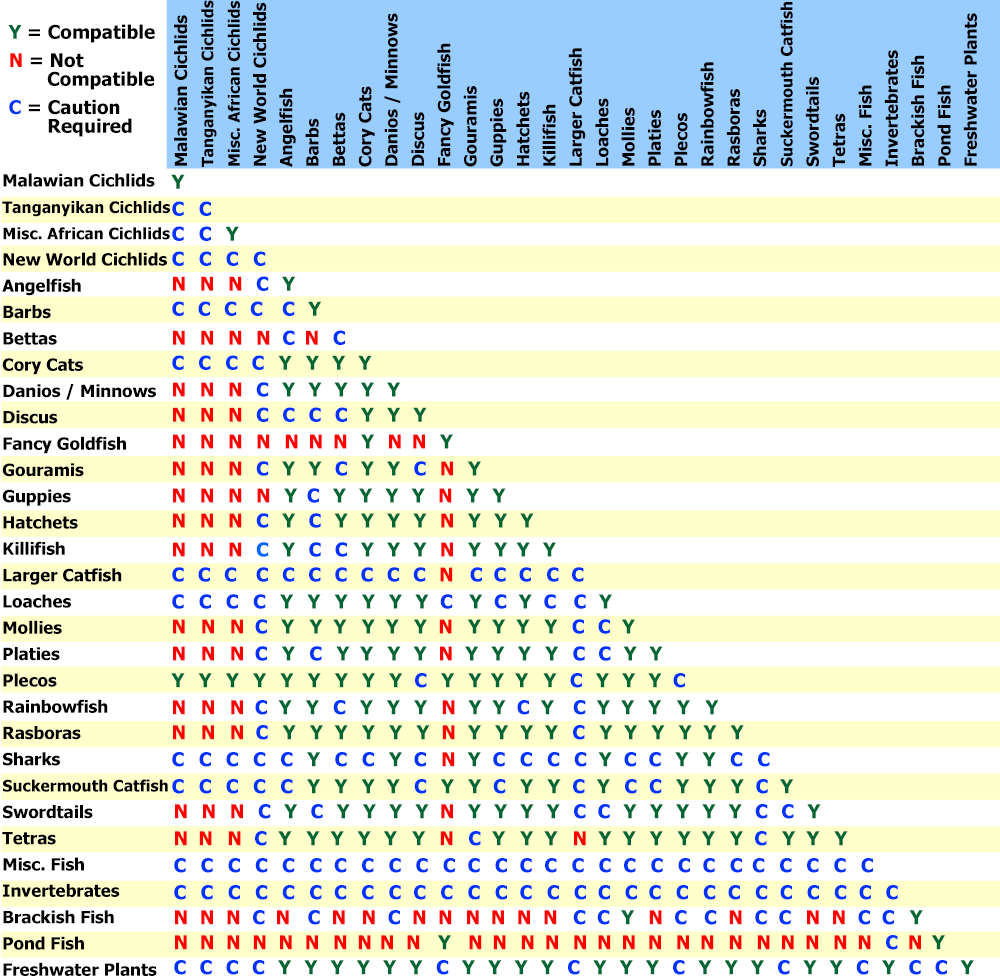Description
Salvini Cichlid – Vibrant Beauty with a Bold Personality
The Salvini Cichlid (Cichlasoma salvini), also known as the Yellow-Belly Cichlid, is a dazzling species from Central America admired for its vivid coloration and confident demeanor. With a bright yellow body, bold black lateral markings, and accents of electric blue and red—especially during breeding—this cichlid adds fiery vibrance to any aquarium.
Native to rivers and lagoons in Mexico, Belize, and Guatemala, Salvini Cichlids are moderately aggressive and thrive in spacious aquariums with hiding spots and territories. They are best kept with other robust cichlids or large tank mates that can hold their own in an active environment.
Key Features:
-
Coloration: Bright yellow body with black markings and blue/red highlights
-
Temperament: Territorial and semi-aggressive—assertive especially when breeding
-
Size: Can grow up to 6–8 inches
-
Tank Requirements: Minimum 55 gallons with rocks, driftwood, and defined territories
-
Diet: Omnivorous—enjoys high-quality pellets, frozen/live foods, and occasional greens
-
Compatibility: Best with similarly sized, semi-aggressive fish—avoid small or delicate species
With its stunning appearance and lively behavior, the Salvini Cichlid is perfect for aquarists seeking a colorful and energetic fish that brings both flair and character to a cichlid or Central American community aquarium.
Click & Collect
Livestock will only be bagged once you arrive, or if you contact us in advance to request it ready beforehand.
Local Delivery
Order anything from our in-store range and have it delivered right to you.
-
Minimum spend: £50
-
Delivery up to 10 miles: £10
-
Delivery up to 25 miles: £20
Distances are measured “as the crow flies”, not by road.
Once your order is placed, we’ll be in touch to arrange a suitable delivery date and time.
Please note, delivery may take a little longer as we often group orders together to build an efficient delivery run.
Important: If you’re ordering a large aquarium, please ensure someone is available to help unload the van on arrival.
Dry Goods Delivery
-
DX Express: 1 working day, same-day dispatch before noon 0-75kg
-
Express Pallet: 1–3 working days 75-500kg
If you'd like to add more items to an existing order that hasn't yet been dispatched, please place a Click & Collect order and leave a note asking us to combine the orders.
Please note: We currently only dispatch parcels Wednesday to Friday.
Pre-Order
Want the full details? Check out our Terms & Conditions.
Livestock Delivery
Thursday Delivery – £24
-
Dispatched Wednesday afternoon
-
Delivered Thursday before 1pm
-
Order by Wednesday 12 noon
-
Minimum spend: £50
Friday Delivery – £24
-
Dispatched Thursday afternoon
-
Delivered Friday before 1pm
-
Order by Thursday 12 noon
-
Minimum spend: £50
Saturday Delivery – £29
-
Dispatched Friday afternoon
-
Delivered Saturday before 1pm
-
Order by Friday 12 noon
-
Minimum spend: £50
📦 Want to Add to an Existing Order?
No problem! Just place a Click & Collect order and leave a note asking us to link it with your original one (as long as it hasn’t been dispatched yet).
🛒 Dry Goods Now Included!
You can now include dry goods in your livestock delivery – perfect for topping up supplies in one go.
❄️ Please note: We can’t send frozen food with livestock – please order frozen items separately.
⚠️ Delivery Exclusions
Unfortunately, we’re unable to deliver livestock to the following postcodes:
Scotland & Isles:
AB30–AB56, DD8–DD10, DG3–DG9, DG12–DG14, FK17–FK21, KA18–KA19, KA26–KA30, PA20–PA38, PA80, PH3–PH40
Cornwall Isles: TR21–TR25
All of the following postcodes are excluded:
BT, HS, IM, IV, JE, KW
Plus Channel Islands and Shetland Islands
Payment & Security
Your payment information is processed securely. We do not store credit card details nor have access to your credit card information.


